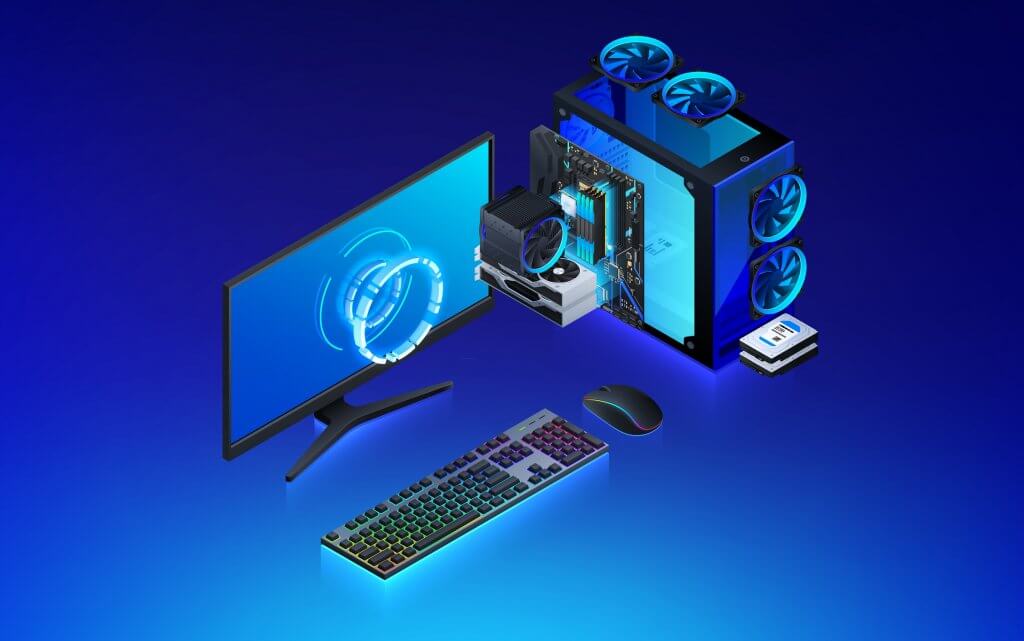In an era where technological advancements occur at lightning speed , excess computer hardware are now a valuable resource for technology fans and cost-aware shoppers alike. Whether you are an independent builder , a player aiming to save , or an individual just wanting to prolong an old device's life , sourcing quality surplus components can be a significant advantage. The allure of these parts lies not only in their low cost and also in the option for upgrades and enhancements that can significantly enhance your user experience.
Nonetheless, moving through the realm of excess computer components can be daunting . With a wide array of selections available, knowing what to look for is vital to making wise spending decisions. This resource will present essential tips and insights, preparing you to identify high-quality components while eliminating typical mistakes . From https://anotepad.com/notes/tb88rb86 -hand motherboards and GPU units to leftover RAM and PSU units , grasping the details of each part will assist you in discovering great offers and ensure that your purchases meet your performance needs . Join us as we delve into the definitive guide for purchasing excess computer components and find out ways to amplify your technology spending wisely.
Primary Things to Consider While Purchasing Surplus Inventory Components
When exploring into the area of the realm of surplus electronic components, your initial thing to think about is always the importance of the vendor's standing. It's crucial to buy from dependable sources, be it these be online marketplaces, neighborhood retailers, or dedicated surplus suppliers. Investigate the supplier by assessing reviews, ratings, and feedback from past customers. A reputable vendor often provides various forms of quality guarantees and return policies that can secure your capital.
Then, when examining leftover parts, be mindful of the condition of every part. Check for any signs of wear, damage, or deterioration that could influence the performance. Testing the parts, if feasible, can uncover hidden deficiencies that are not readily visible. In the case of electronic parts, think about whether they're renovated, as this may influence their performance and duration of use. Make sure to favor parts that come with a guarantee or guaranteed support.
In conclusion, the compatibility is a crucial aspect when picking surplus inventory components. Before making any transactions, confirm that the parts you intend to buy are suitable with your present configuration or planned build. This requires verifying specs such as connection types for processors, memory speeds, and power specifications for PSUs. Getting to know yourself with the compatibility issues helps prevent the difficulty of purchasing parts that do not match, ultimately saving resources and money.
Assessing Condition and Condition of Elements
As shopping for surplus computer parts, it is essential to inspect the condition and status of the parts. Begin by thoroughly examining the visual condition of each part. Be on the lookout for signs of tear, corrosion, or any damage. Parts such as motherboards and GPU cards should have clear, unharmed circuit boards with no swelling or leaking capacitors. It is also essential to check for any absent components or damaged connectors that could affect functionality.
Next, think about the age and usage of the parts. Ask the seller about how the parts were used and whether they have been evaluated. A lot of surplus parts come from retired systems, so understanding their prior usage can give insights into their current state. For key components like central processing units and graphics processing units, ask if they have been run at higher speeds or heavily used in gaming, as this could have an impact on their longevity and reliability.
At last, examining the components whenever possible is an valuable way to ensure condition. Utilize testing software to check performance metrics and ensure that each part is working properly. For example, testing a surplus disk drive with software that evaluates read/write speeds and inspects for bad sectors is an outstanding measure. By taking these measures to examine the state and functionality of surplus parts, you can make knowledgeable purchasing choices and reduce the chance of buying inferior components.

Maximizing Value and Avoiding Pitfalls
When shopping for extra computer parts, maximizing worth necessitates a careful method. Start by studying the particular components you require and their going prices to have a reference for evaluating. Use this knowledge to identify fair deals and avoid overpaying for items that may not be worth their listed price. Being aware of the average lifespan and efficiency benchmarks of components can also help you in making informed decisions, guaranteeing that what you purchase is actually beneficial for your setup.
It's essential to check items carefully before get. Look for signs of wear, missing components, or any visible damage. For electronics, testing functionalities, when possible, is vital to avoid purchasing defective parts. Request sellers about return policies or warranties, as reputable providers usually offer some form of protection. Additionally, check the genuineness of brands and parts to avoid fake products that can lead to poor results.
Lastly, always keep in mind the matching of the surplus parts with your existing system. This includes checking if motherboards, CPUs, and RAM can function together without any issues. Be aware of the requirements necessary for power supplies and cooling systems as also. Knowing computer surplus store can spare you headaches and unnecessary expenses down the line, ultimately leading to a more satisfying experience when upgrading or enhancing your computer with surplus components.
